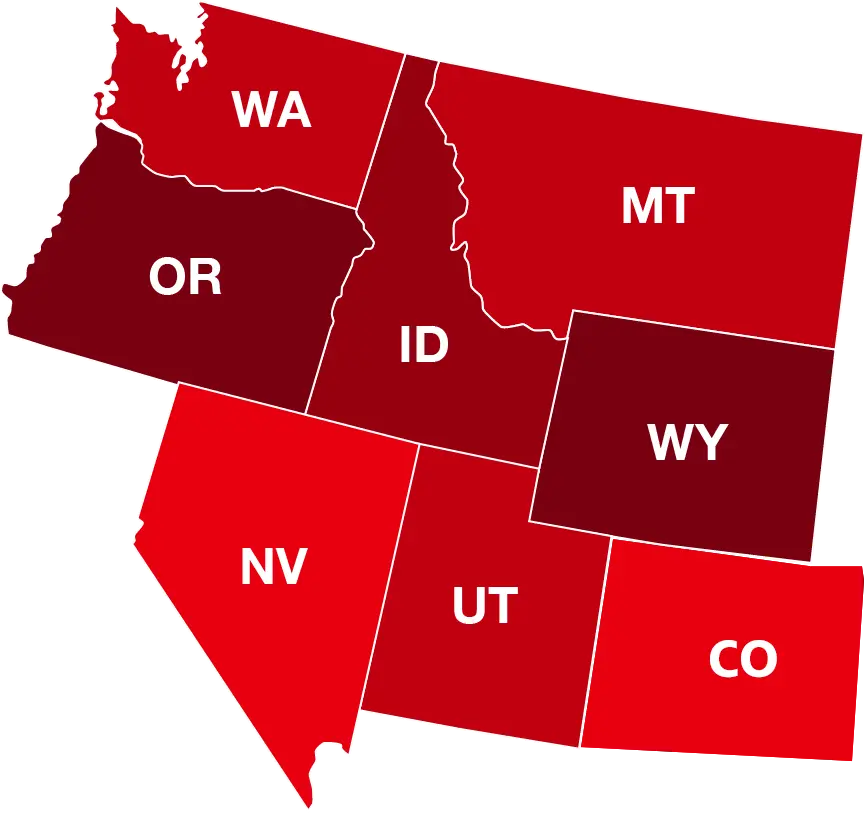Shipping Container Barn Ideas, Designs and Plans

Need a fast affordable shelter for your livestock? A shipping container barn could be the perfect option.
A single unmodified container makes an excellent loafing shed or barn stalls for your animals, tools, or feed—all without breaking the bank. Shipping containers are strong, weathertight, rodent proof, and ready to go the moment they’re dropped on your land.
Combining two or more containers with a few key modifications – like a shipping container roof – offers a variety of shipping container barn ideas that compare to traditional construction styles at a fraction of the cost.
If you’re running a small homestead, storing tractors or other heavy equipment, or just need a rugged workshop out back, container barns offer a creative and practical solution.
In this article, you’ll discover some useful shipping container barn plans and designs.
Why Build a Shipping Container Barn?

Shipping containers are tough, affordable, and surprisingly perfect for barn life. Here’s why they’re worth considering:
- Ready-made structure – No framing or roofing required. Just drop it on your land and start customizing.
- Budget-friendly – Used containers cost far less than building a traditional barn from the ground up. (You can buy used shipping containers for affordable prices)
- Built to last – Originally designed to handle harsh ocean travel, so they’re more than tough enough for farm life.
- Pest and rodent resistant – Steel walls keep out mice, termites, and other unwanted guests.
- Weathertight – No warping, sagging, or rot—just solid protection for your tools, feed, and animals.
- Eco-smart – Repurposing a container gives it a new life and cuts down on waste.
- Expandable design – Need more space? Stack or line up more containers. It’s modular and easy.
- Custom fits – From tack rooms to hay storage, you can turn it into exactly what your setup needs.
Simple, tough, and flexible—what’s not to like? Even if you’re not ready to buy a container for your farm, you can rent a shipping container to store hay, feed or equipment.
Shipping Container Barn Designs and Plans
Certain agricultural structures, like single-story detached buildings, may be exempt from building permits under specific conditions, such as size and use. For example, some counties exempt agricultural structures up to 846 square feet. Check your local regulations before building.
When it comes to layout, shipping containers give you a lot of room to play. Whether you’re working with one container or building out a more complex setup, you’ve got several design options.
Single Container Barn Designs
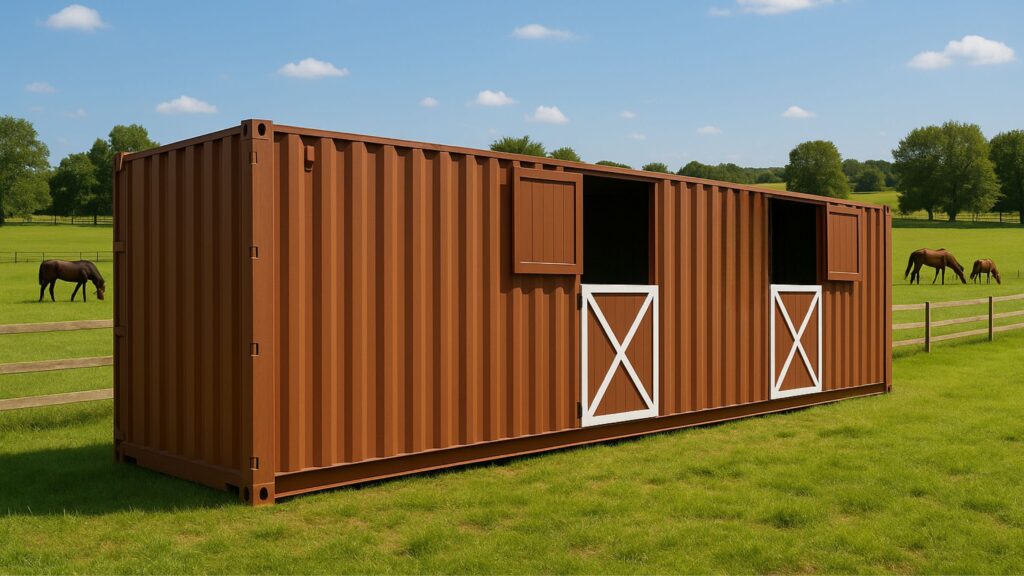
Shipping containers are wind and water tight as well as rodent proof. Because of that, they make excellent farm structures.
If you’re starting small, a single shipping container makes a great tool and feed storage shed, a loafing shed to give livestock shade in the pastures, or a small barn for small or medium sized livestock.
A 20-foot container can hold around 120 bails of hay or provide two 8-foot-by-10-foot stalls with ceilings just over 8-feet tall for animals.
Need more room? A 40-foot high cube container gives you enough space for hay, tack, and animal stalls. A 40ft high cube container is a foot taller than standard containers at 9.5 feet tall.
Barns built from a single container are simple. By cutting and framing in doors and adding a dividing wall, you’ve instantly got two stalls.
Adding a shed roof off one or both sides provides additional shade and rain cover for your animals.
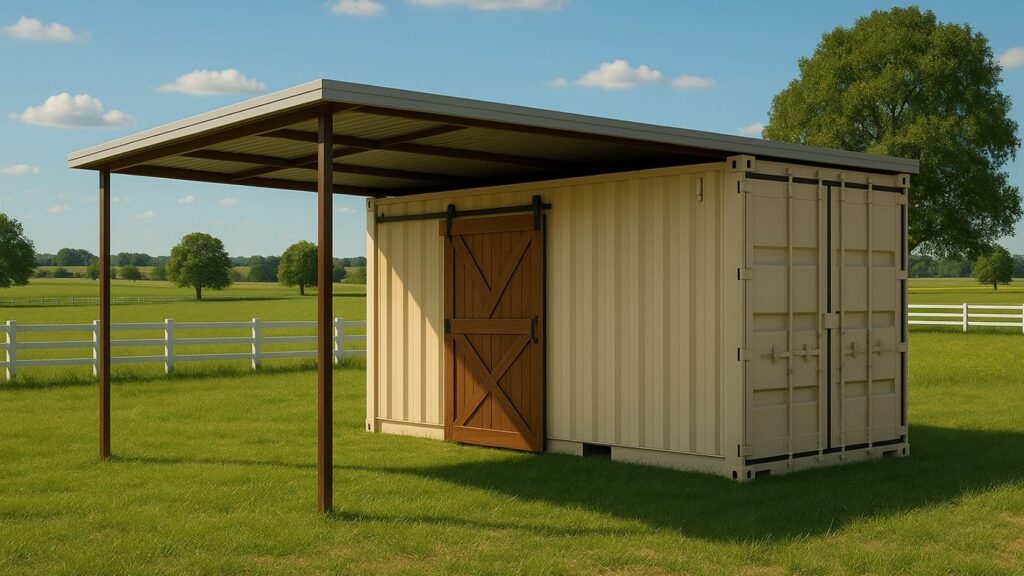
Shipping Container Barns With 2 Containers
Place two containers 10–12 feet apart and build a roof between them. Now you’ve got covered space in the middle for tractors, animals, or a shaded work area. The containers on the sides can hold tools, feed, or gear.
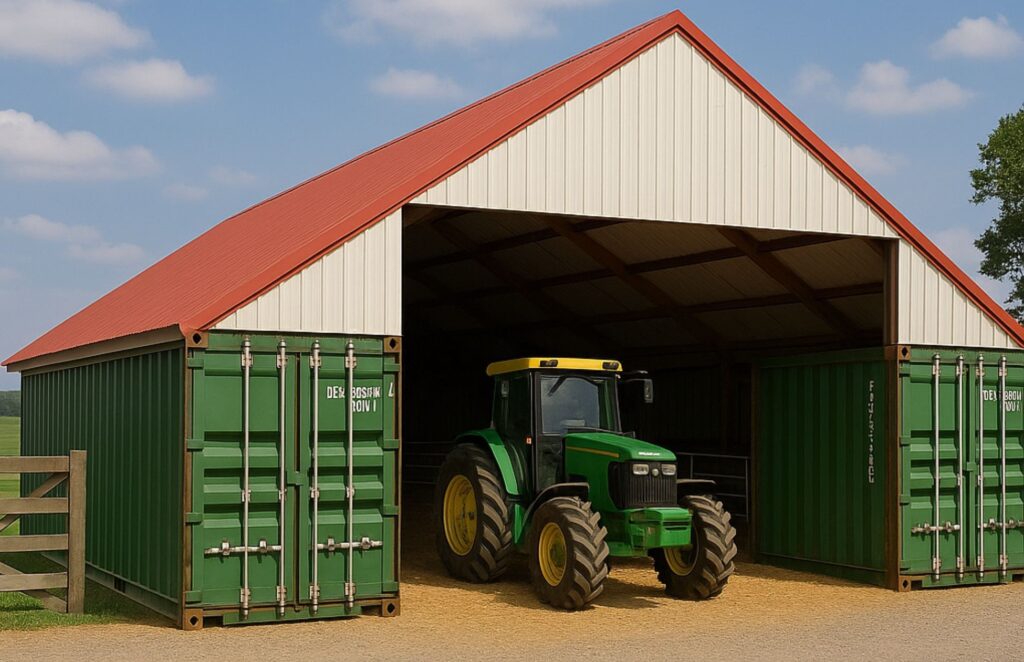
This barn-style structure is built using two shipping containers as side walls, topped with a red metal gable roof. The front bay is open, revealing a spacious interior with plenty of space for
large equipment like farm tractors as well as livestock pens and feed storage.
There are many types of different roofs that can be used between containers to create a shelter including shipping container canopy kits made from polymer fabric or metal.
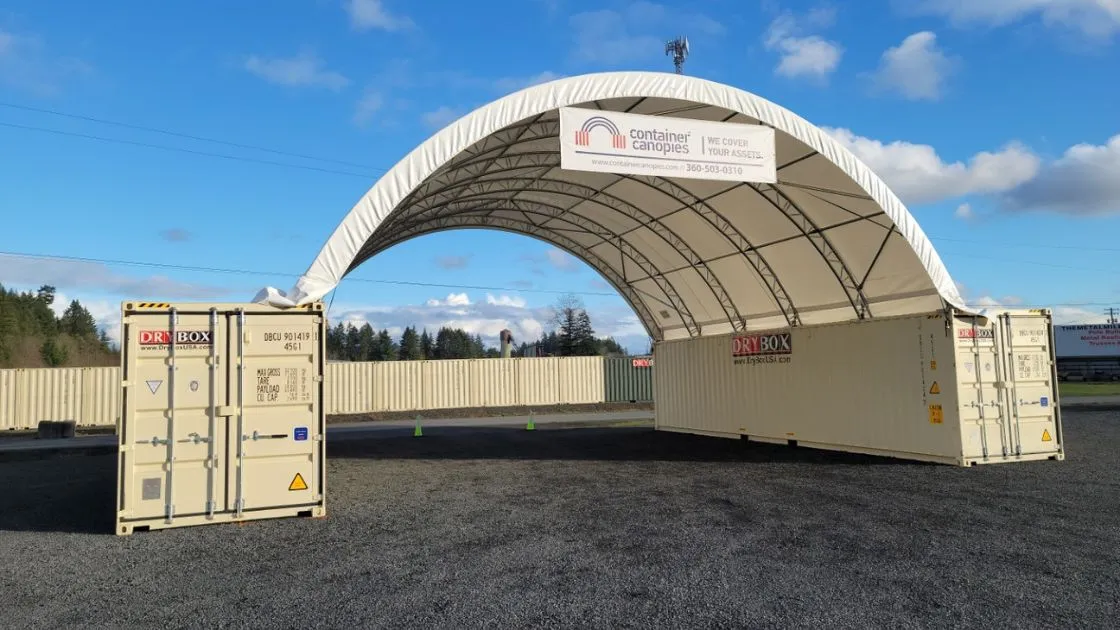
Some of these arched canopy roofs create a fully enclosed environment as seen below.
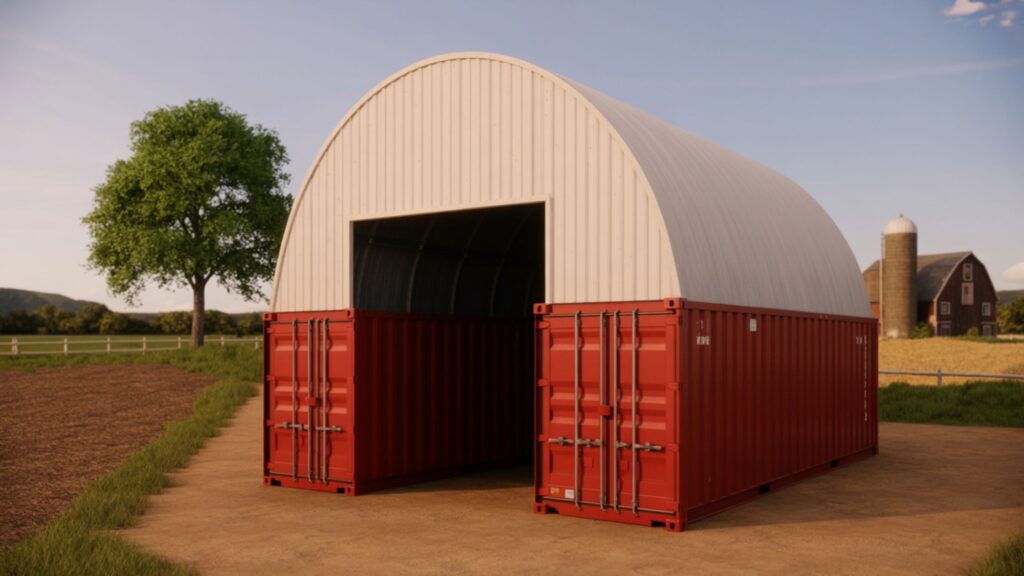
Other roof styles can turn two containers into an attractive barn like the tradition gambrel roof barn in the image above and the shipping container horse barn design below.
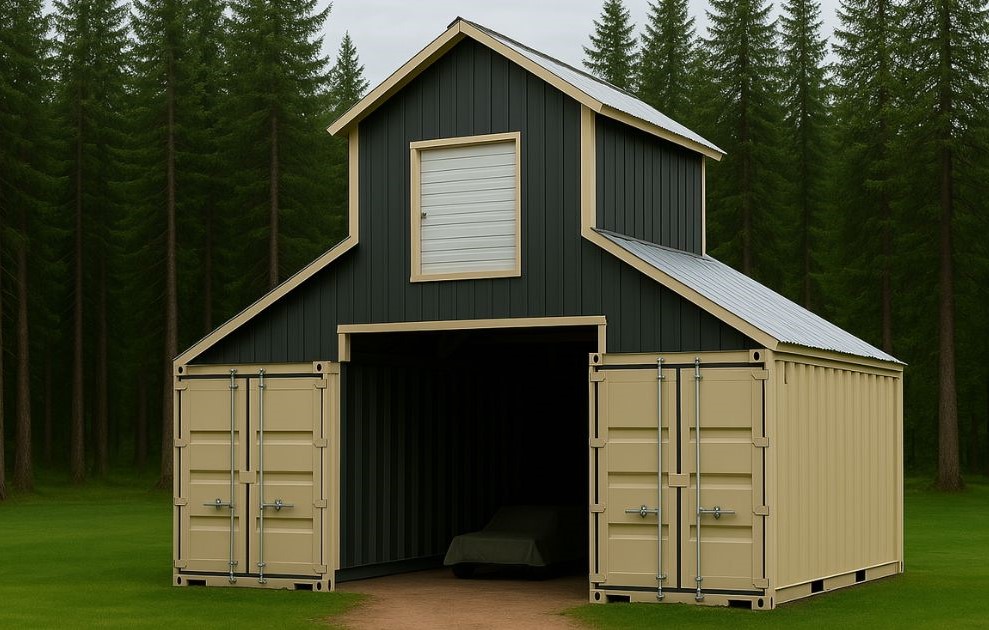
Stacked Container Barn Design
Want to go vertical? Stack a 20ft or 40ft container on top for extra storage or even an onsite office space with a view. Add stairs or a ladder and turn the second story into something functional.
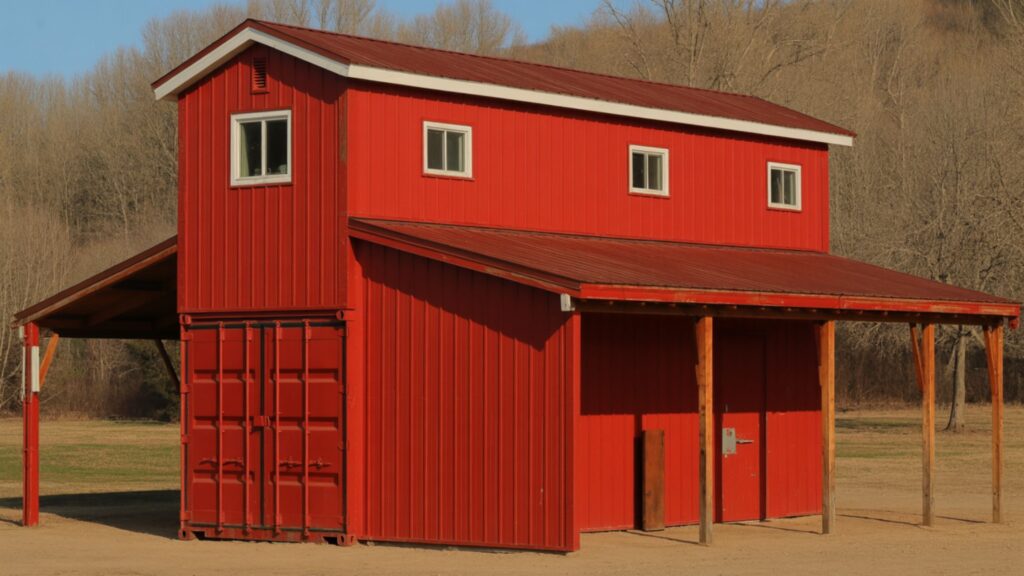
The best part? You can always add more later. Start with what you need now, and build out as your farm or homestead grows. It’s like barn building with puzzle pieces that actually fit your life.
Other Modifications and Design Features to Consider
Building a container barn means you’ve got a blank steel canvas—and how you finish it makes all the difference. A few smart upgrades can take your setup from “just storage” to a fully functional farm hub.
Start with ventilation. Containers are airtight by design, which is great for shipping cargo, but not so great for livestock or feed. Adding roof vents, louvered windows, or even solar-powered fans can keep the air moving and the heat down.
Next, think about insulation. If you’re housing animals or storing anything sensitive to temperature swings, insulating the walls and ceiling is a must. Foam board or spray foam works great and helps with moisture, too.
Doors matter, too. Swapping out standard container doors for rollup doors or sliding barn doors makes everyday access way easier. You can even install Dutch doors for horse stalls or feed access.
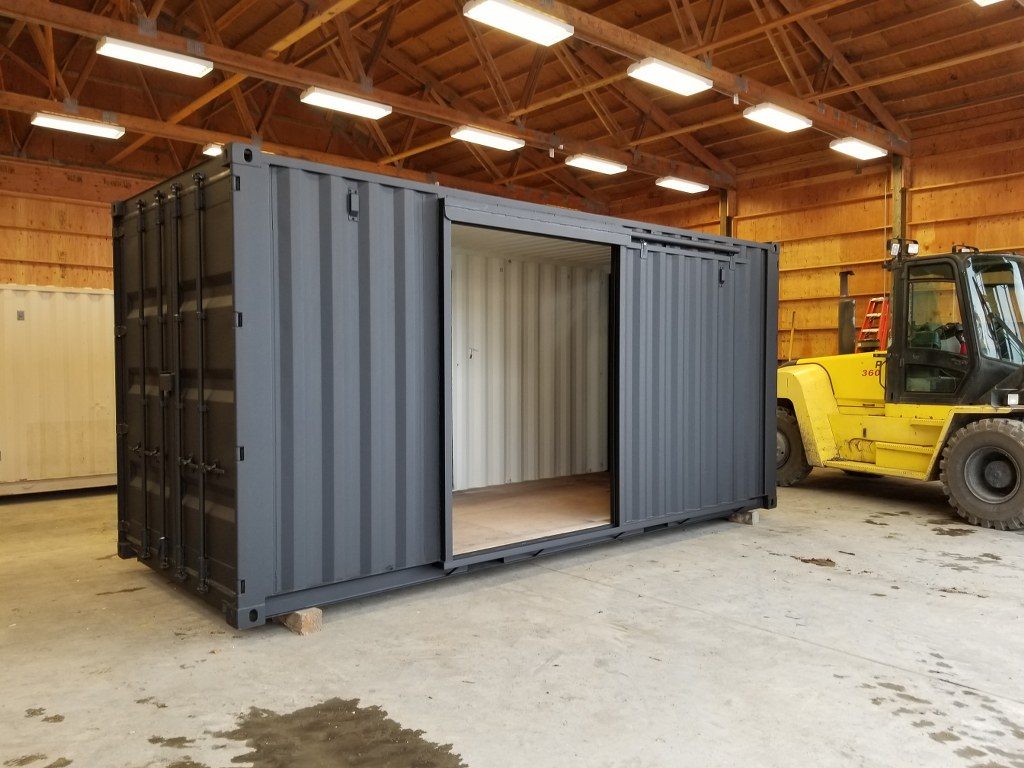
Flooring upgrades are also a game changer. If you’re keeping animals inside, you’ll want something easy to clean and gentle on hooves—like sealed wood, rubber mats, or poured concrete.
Add lighting and outlets if you plan to work inside at night or run equipment. A simple solar setup can cover the basics, or you can wire it to your main power.
Finally, think about storage hacks like shipping container shelves, hooks, tool racks, and partition walls turn a blank container into a tidy, useful space.
With just a few upgrades, your container barn can be as functional—and comfortable—as anything built from scratch.

